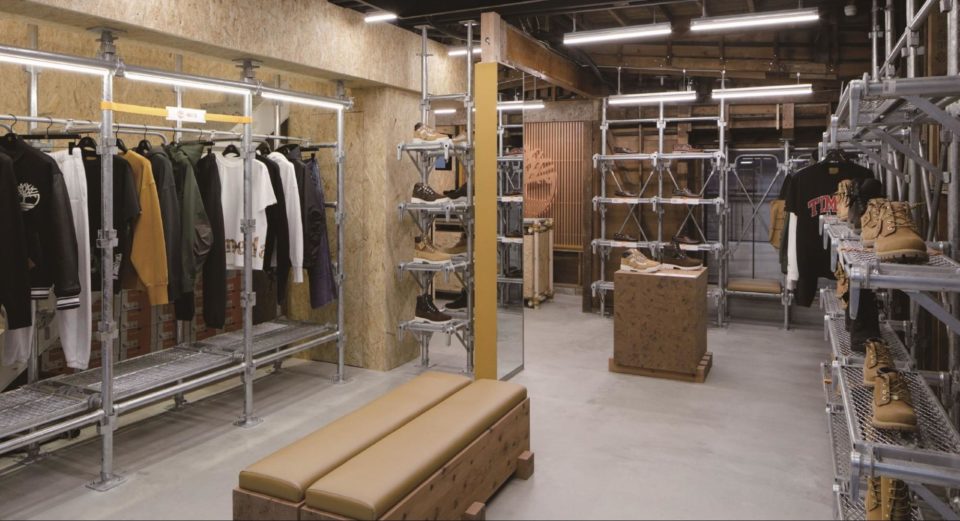What is retail getting wrong about transformation?

Retail transformation has become a common phrase in the industry in recent years.
Retailers recognise that the world, and in turn their customers, are changing and that they need to change as well.
Yet, putting this change into practice effectively remains a challenge for many. The approach to transformation is often lacking which means retailers are setting themselves up for failure.
We spoke to retail transformation expert Oliver Banks about what retailers are getting wrong about transformation and how they can set themselves up for success with the transformation trifecta.
Oliver Banks, Founder, OB&Co Ltd
What do you do?
I help retailers work out what’s the best thing that they should do to change and transform.
As we’re thinking about the world of change and transformation, there are so many different options and opportunities.
It’s easy to come up with the ideas, but the hard bit is working out which are feasible and how to turn it from an idea in your head into reality.
I help retailers to take those ideas through to implementation, to clarify what’s in their head, explain it, get buy in and make it happen.
What sort of projects do you get involved with?
I work on a huge range of projects and programmes, mostly focused on operating model and defining how a retailer works.
This includes looking at how different parts of the organisation are working on a process level, creating new propositions and new business units and what they need to make them successful, and organisation redesign.
They’re complex challenges with no easy answer and lots of moving parts.
What is your background and how does it help in your work?
I have a background in mechanical and systems engineering and worked for companies like Xerox.
You may think what does designing a photocopier have to do with retail? It’s all about the mindset that you go through.
Engineering is about problem-solving. It’s understanding a customer’s problem, being able to define it really clearly, analyse and understand it, and then come up with a solution to that problem.
Retail change and retail transformation is a lot the same.
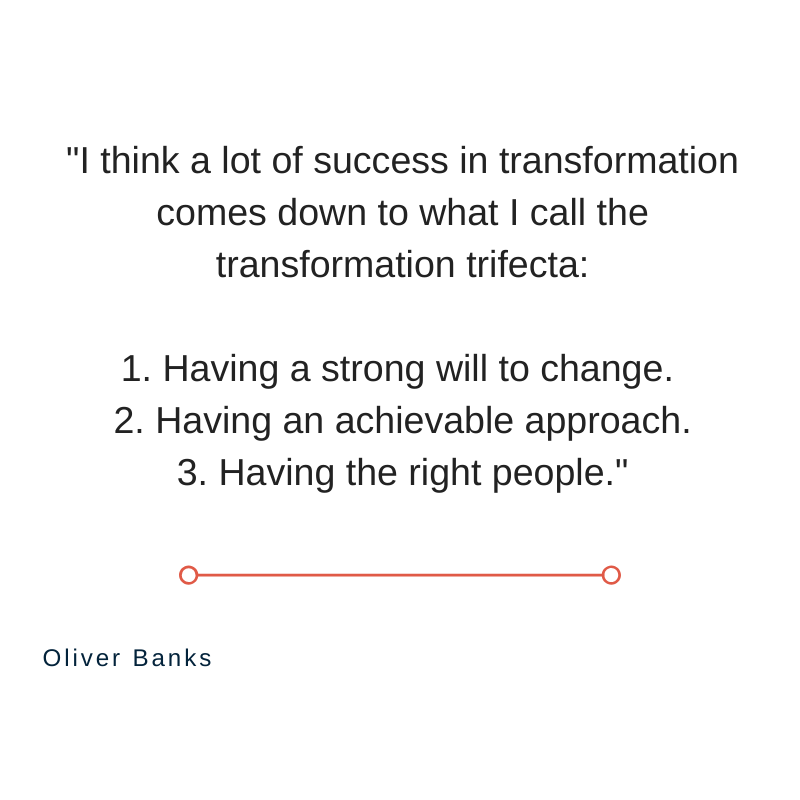
What is the difference between optimisation and transformation?
Firstly, the word transformation is overused.
If you say, what does transformation mean to you, people will have a whole range of different thoughts and opinions.
For some people, it will mean fear. It will mean uncertainty. For others, excitement and opportunity. It will mean a mix of emotions.
If you are using transformation too much as a word, you can set those same emotions going across the organisation, perhaps unintentionally.
There are two real types of transformation.
Fundamental transformation is an authentic transformation in that something is completely different.
It could be a brand new proposition. It could be a complete shift in how a business operates and a resetting of the business model.
The second is incremental transformation, which is more of the optimisation side. These are smaller changes which in and by themselves are not transformative, but when you get 5, 10, 100 building up, suddenly they can have a truly transformative effect on the business as a whole.
For the most part, I’d put what Amazon do as incremental transformation. They do have their moments of fundamental transformation, like Prime or their Just Walk Out technology from their “Go” and “Fresh” stores. But what is it that they do that continually puts them at the top of the game?
It’s the incremental stuff.
Do you feel that retailers are focusing on the right type of transformation?
There are some retailers that are in a great place from a business and operating model perspective. They want to focus on incremental transformation because that’s going to keep them at the top of the game.
If you don’t do incremental transformation, you stagnate and then in five or 10 or 20 years’ time you have to take radical action or worse.
At the same time, there are retailers in all parts of the industry that are doing incremental transformation when they need to be thinking more fundamental.
It’s always worthwhile having someone in the organisation that is there to provoke some of those fundamental transformation ideas.
It may be that none of these big fundamental shifts come off, but actually if you are considering them, that’s a positive place because then you’re making an informed decision rather than keeping your head in the sand.
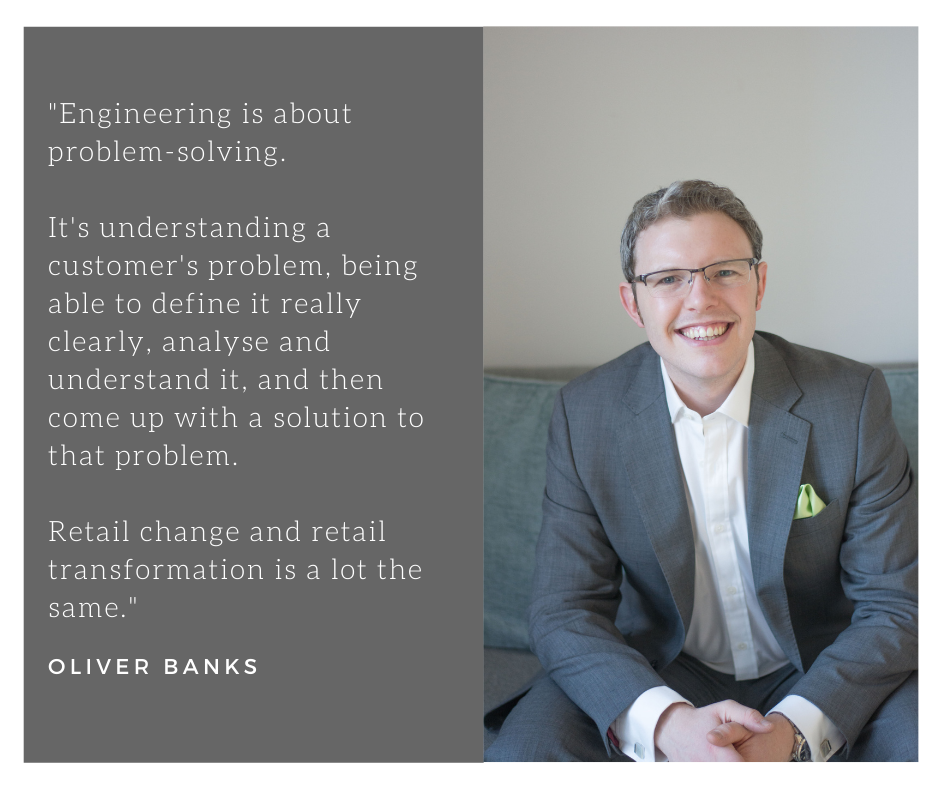
What is essential when thinking about transformation?
A large part of it is down to the purpose.
Where do you fit, as a company, in your customer’s eyes? Why should they care about who you are as a brand?
Once you understand that, you can question where does everything sit within that purpose?
Does this transformation, either a radical new idea or optimisation, actually support that purpose? Or is it just a fun idea?
Sometimes you have a fun idea that may be a good business idea and the numbers may all stack up, but if it isn’t driving you towards that same purpose your business is going to diverge, and you end up with two businesses with one giant hat and that’s not going to be a winning strategy for 10 years’ time.
Next, you need to ask how do you make that idea happen? What are those different pieces that would need to be in place across the organisation?
Do you have what you need to enable them? Or are they brand new skill sets, capabilities, or resources?
That will allow you to paint a picture of what the end result is going to be like, which is critical for bringing stakeholders on board.
The final piece of the puzzle is to look at how the idea stacks up financially.
Can you take us through your approach to transformation?
Every transformation is different and each situation requires a bespoke approach. However, I have a six-point model to help.
A is for approach. You need to define an achievable way to deliver the change.
B is for benefits. Why are you doing this? What are the tangible or intangible aspects to the change or transformation, as well as the financial?
C is for clarity. Do people understand and agree to this? How do you get that clarity?
D is for drive. If the work doesn’t get done, nothing changes.
E is for essential. Is this transformation essential in your organisation? This gives you a priority, so you know what you’re doing and what you care about most.
F is for flexibility. You need to be adaptable, ready to shift, to adjust and to learn.

Which retailers are best set up for transformation?
Amazon are, frankly, awesome at this. Change is naturally embedded in the organisation. They are continually driving themselves forward.
A lot of people talk about obsessing over customers, but Amazon were first. That drives a healthy dissatisfaction with the status quo.
They know how to deliver change. Jeff Bezos talks about understanding the detail in your business and the value on that and that absolutely is critical. That helps to define the approach and the benefits.
They have a brilliant process around getting clarity when ideas are pitched.
They’re also flexible. Interestingly, Amazon has been one of the companies in this whole pandemic that has not needed to flex all that much because of the way that they have been set up.
I think they are the benchmark for change.
Why do you think more retailers aren’t ‘like Amazon’? And what gets in the way of transformation?
I think a lot of success in transformation comes down to what I call the transformation trifecta:
1. Having a strong will to change.
2. Having an achievable approach.
3. Having the right people.
It’s easy to get caught up in some brainstorming or strategy session and come up with all these fantastic ideas, but if you don’t walk out of that meeting and say, ‘I really genuinely want this to happen’, then it’s going to fall over.
You’ve got to be able to get everyone else to also genuinely want it to happen which means you’ve got to be able to engage people. You’ve got to be able to help them have an honest viewpoint on what is going on. You’ve got to drive decisions in that direction. There’s lots of different aspects that go into having this strong will to change.
Having an achievable approach is also vital.
What do we mean by ‘be like Amazon’? What are our priorities? Does that align with our current priorities and roadmap, or do we need to rip those up? Can we do incremental transformation to get there?
Momentum is part of this. From a standing start, you’ve got to get stuff going. You’ve got to start delivering change that helps you be like Amazon.
You get this momentum building up and over time it is a snowball effect and that’s when change gets really exciting.
The final part is what is the genuine leadership that is driving you towards transformation?
You also need to think about how you get the right people involved with the right mindset, capability and experience? Are you going to train? Are you going to hire? Are you going to rent by bringing in some external consultants?
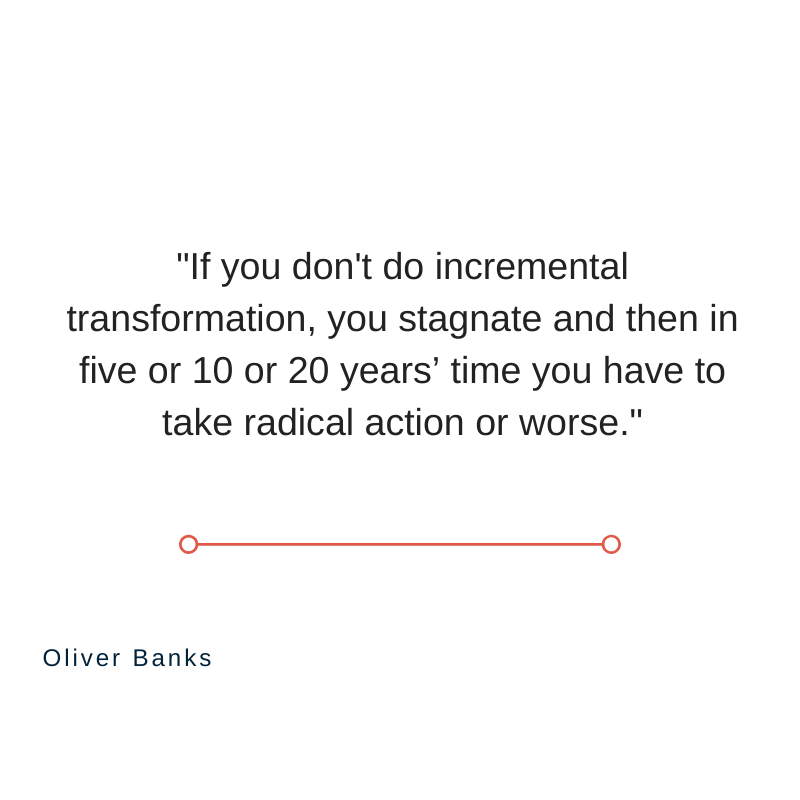
Are businesses typically weaker in one area of the transformation trifecta than the others?
The transformation trifecta genuinely is like a three-legged stool – if one is not there, it topples over.
It doesn’t matter how strong the others are the transformation will fall in different ways, just like your three-legged stool would fall in a different way if you’re missing a leg.
If you’re missing a strong will, you know what you need to do, you have the team ready, but your decision-making is going to falter.
If your achievable approach is missing, then you want to change and you’ve got this amazing team of the right people that can make it happen, but you’re going to get confused. There are going to be conflicting changes and multiple priorities.
If you’re missing the right people, you’re going to find yourself knocking on a brick wall because you know what you want to do and have the plan to do it, and it just won’t happen.
How should retailers be thinking about their operating model?
Firstly, it’s important to ask what does “operating model” mean?
It means a wide variety of things. It might be a process map or a set of process maps. It might be a functional block of what the business is. It might be a set of training for colleagues to be working to.
It might be an organisation chart. It might be a business canvas or a one pager. It might be the business model itself and financial model.
The first thing to do is to understand what someone means by operating model? Then how do you go about bolting that into the wider definitions just mentioned?
Chances are to really make the best impact you need to consider more of those pieces than just one.
For example, if you’re thinking about process maps, you’re going to want to consider elements like training, org charts and people spec.
Another question is why do you want to define an operating model?
I strongly believe it is the right thing to do if you have the right need.
If you are designing a new business model, business proposition or business unit, you’re probably going to want to understand the operating model in a lot of detail.
Companies like Walmart, Tesco and Amazon all have a very clear understanding of their operating model, which allows them to expand and scale quickly.
We saw Tesco doing that with grocery home delivery in the pandemic. They scaled much faster than any other grocer in terms of delivery volumes, because they were clear on the operating model and they had the will, the approach and the people to be able to rapidly redeploy that operating model to more stores and more vans.
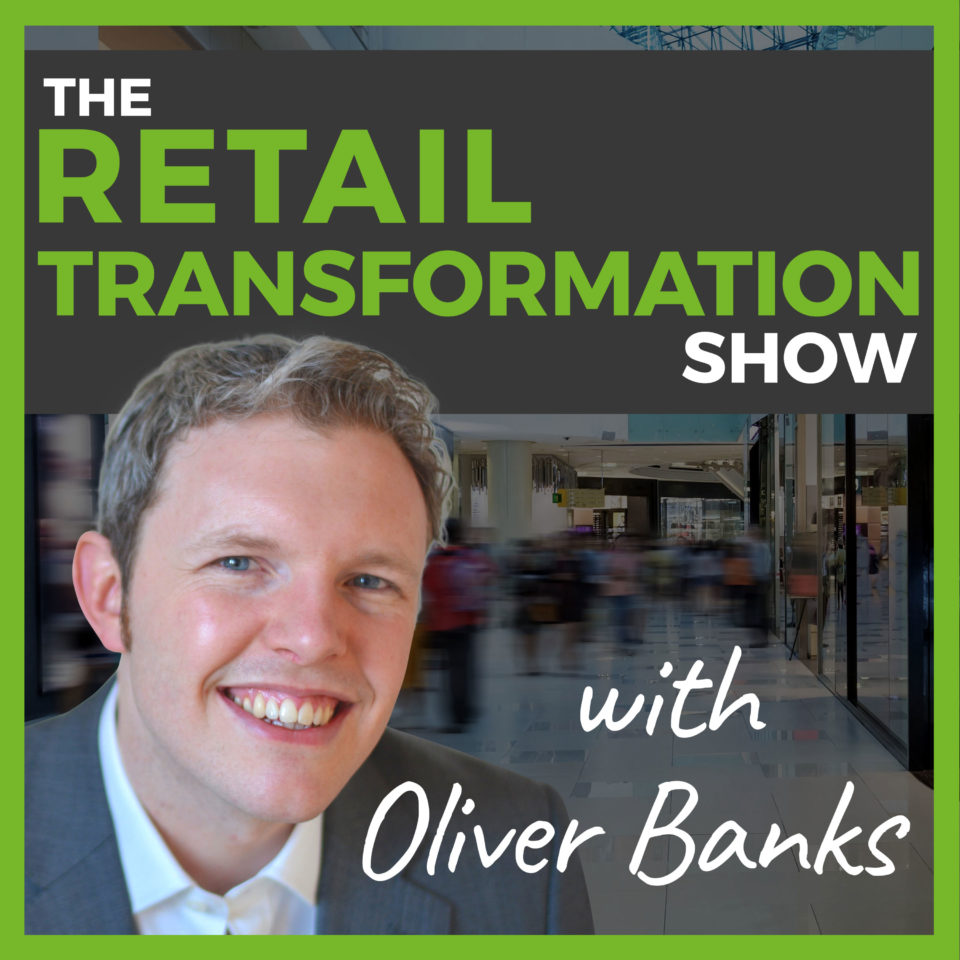
How do retailers define an operating model?
It’s about taking your purpose and turning it into reality. It’s about understanding the brand story from the customer’s perspective. And then how do you turn that into reality too?
For example, it’s always nice to say, ‘we want to be the customer’s number one choice’. What does that mean though? How do you make that happen?
What are the different parts of the operating model and of the business that allow that to happen?
My simple view on retail is it’s two loops that must work in tandem like a bicycle. You’ve got a customer loop, which is all about building awareness, marketing, driving customer engagement with your brand, and making sales. There’s also the post-sale lifecycle as well.
Then you’ve got the stock loop, which is the whole supply chain, getting that stock into the right place so that when the loops link up they meet at the right time, so the customer gets the product.
How does your operating model fit within those two loops? Is it helping your business to connect those two loops together and ultimately make the sale? What is the data loop that connects these (like the chain of the bicycle)?
Some other questions to ask yourself about your operating model are:
· What are the functional areas and how does everything work?
· What are your inputs and your outputs?
· What does this look like from a costs and revenue perspective?
· What systems do you need to enable this?
· How do you get the right people that your business needs?
· Is everything aligned into your brand and what ultimately your operating model is trying to achieve?
· What is your decision infrastructure? How are decisions made and why? Who has decision authority?
· What is your target or ideal operating model? What is your aspiration and what is the approach that will drive you to that future operating model in time?
Do you think businesses can create the will to change?
I think you definitely can create it.
It comes from having that honest review on what your business is like. Do you genuinely walk in either your customers’ shoes or your colleagues’ shoes?
All too often I’ve worked with clients where senior leaders walk into a store and they get the red carpet treatment, but that’s not the true experience that your customers are getting.
If you don’t want to know that because it’s a bit uncomfortable and a bit inconvenient, you’re never going to change.
Despite that I genuinely believe everyone does want to do a great job and push their business forward.
You need to look honestly at what is going on with a fresh pair of eyes, not with all the knowledge you have of problems. It doesn’t matter. Customers certainly don’t care about all of that stuff.
It is hard to remove yourself from that expert, highly complex nature of your own individual knowledge as an exec but if you can do that, then suddenly that’s when you can see what the business is genuinely like as the status quo.
And for retailers that really have the strong will to change and are willing to stand by that, there are huge opportunities to transform and write the next chapter in the company’s history.
Get more valuable insights on how to deliver change in retail by tuning into the Retail Transformation Show podcast every week for a dose of inspiration in 30 minutes or less.
You can also connect with Oliver on LinkedIn or via email oliver[dot]banks[at]obandco[dot]uk


